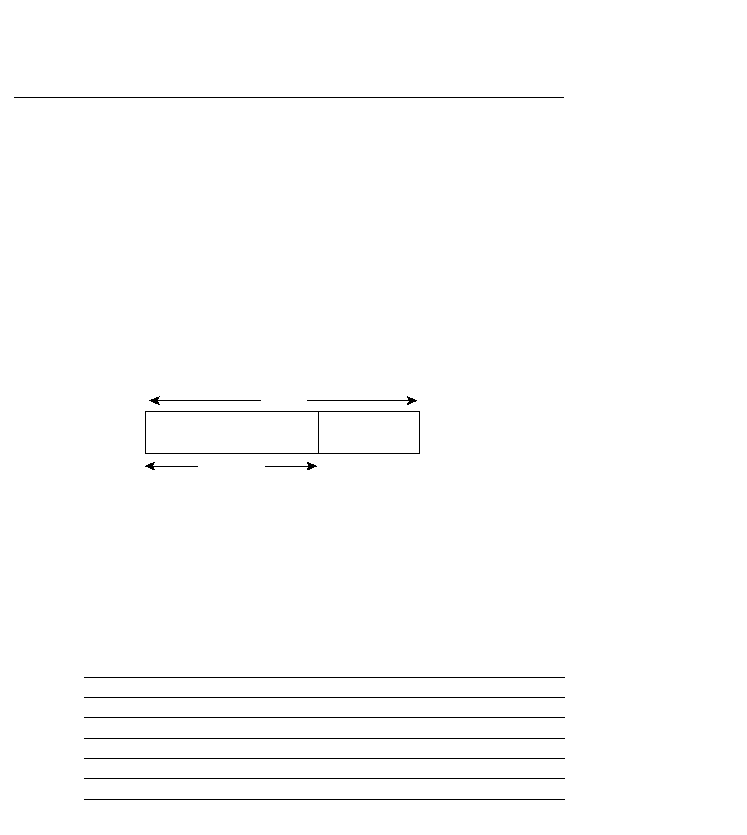
148
Chapter 5: IP Addressing
·
The use of address summarization
·
The use of variable-length subnet masks
·
The use of private address space
Prefix and Host Addressing
An IP address is divided into two parts:
prefix
and
host
. The prefix designates the network
address, and the second part designates the host address. The IP address identifies a system
location in the same manner that a street address identifies a house on a street. The network
address identifies the systems that are located on the same physical network. The host address
identifies the devices, such as workstation, server, and router, that are located on the network.
Just as each house has a unique street and city address to ensure that mail is delivered efficiently,
each system must have a unique network and host address to ensure that data is delivered
efficiently. Figure 5-2 shows a 32-bit IP address, separated by prefix and host.
Figure 5-2
Prefix and Host Addressing
IP Network Classes
IP addressing supports five different network classes.
Class A
networks are intended mainly for
use with networks that require a large number of hosts, because only 8 bits are provided for the
network address field.
Class B
networks allocate 16 bits for the network address field, and
Class
C
networks allocate 24 bits. Class C networks provide 8 bits for the host field, however, so the
number of hosts per network (254) might be a limiting factor. In all cases, the leftmost bits
indicate the network class.
Class D
is used for multicasting, and
Class E
is reserved for
experimental operations. Table 5-2 shows IP address classes and the network addresses per
class with standard subnet masks.
Table 5-2
IP Address Classes
Class
Network Address
A
1126
B
128191
C
192223
D
224239
E
240254
32 bits
Prefix
Host
Prefix length
87200333.book Page 148 Wednesday, August 22, 2001 2:37 PM
